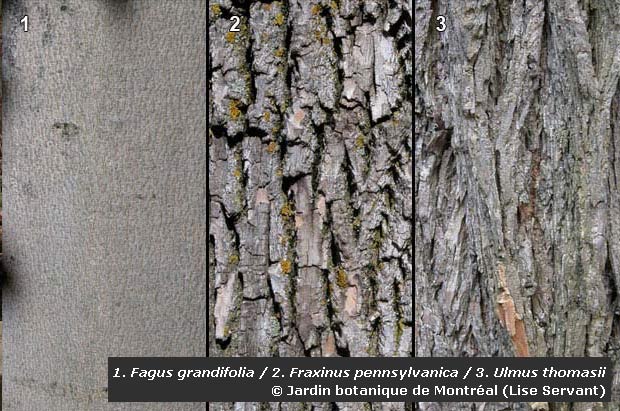A new set of clothes
Why do trees have different sorts of bark? Because they produce it differently. As we saw earlier, trees add girth by adding layer upon layer of new tissue. That's very efficient for the sapwood (Outer layers of wood of the tree trunk, between the heart and the bark.), because the new layers, formed on top of the old ones, are necessarily larger. But the new phloem (Conductive tissue for nutrients or sap.), which is thicker, is created beneath the old layers. Have you ever grown (up or out) and then put on something you used to wear? It's bound to end up ripping, usually at exactly the wrong time.
Trees with smooth bark "mend" their old clothes, thanks to the cork cells on their surface that grow sideways to fill in the holes. Those with gnarled bark have to make do with their new clothes and let the old ones rip on their surface.
Some prefer to lose their bark in large pieces. A plane tree planted in the city uses this inherited feature to cope with a very modern problem – it sheds its old lenticels (Lens-shaped, biconvex spot on the surface of a plant, which serves as a pore.) that are blocked by soot. And when eucalyptus bark, rich in chemical compounds, falls to the ground around a tree it forms natural mulch that inhibits the growth of competitors.





